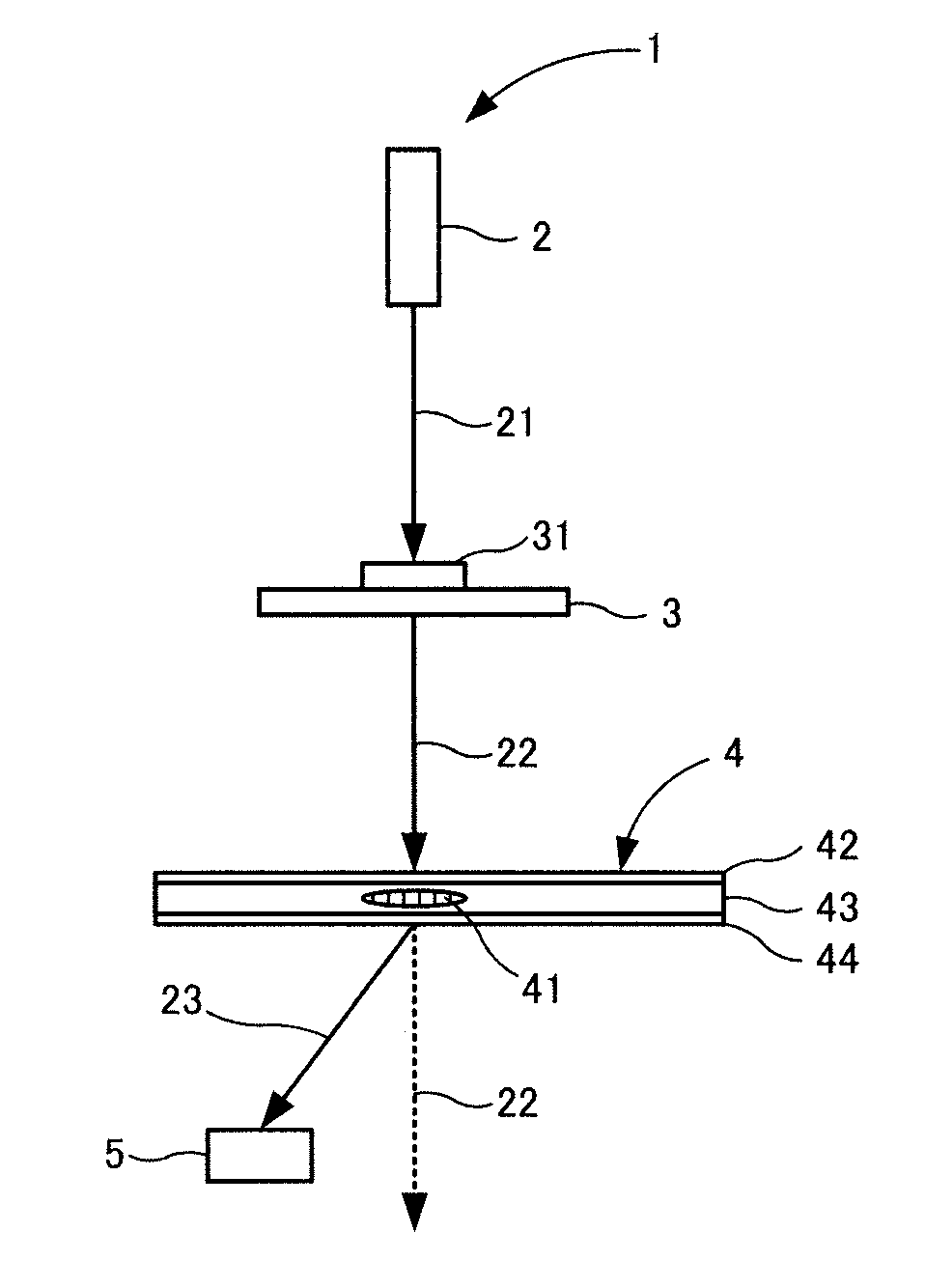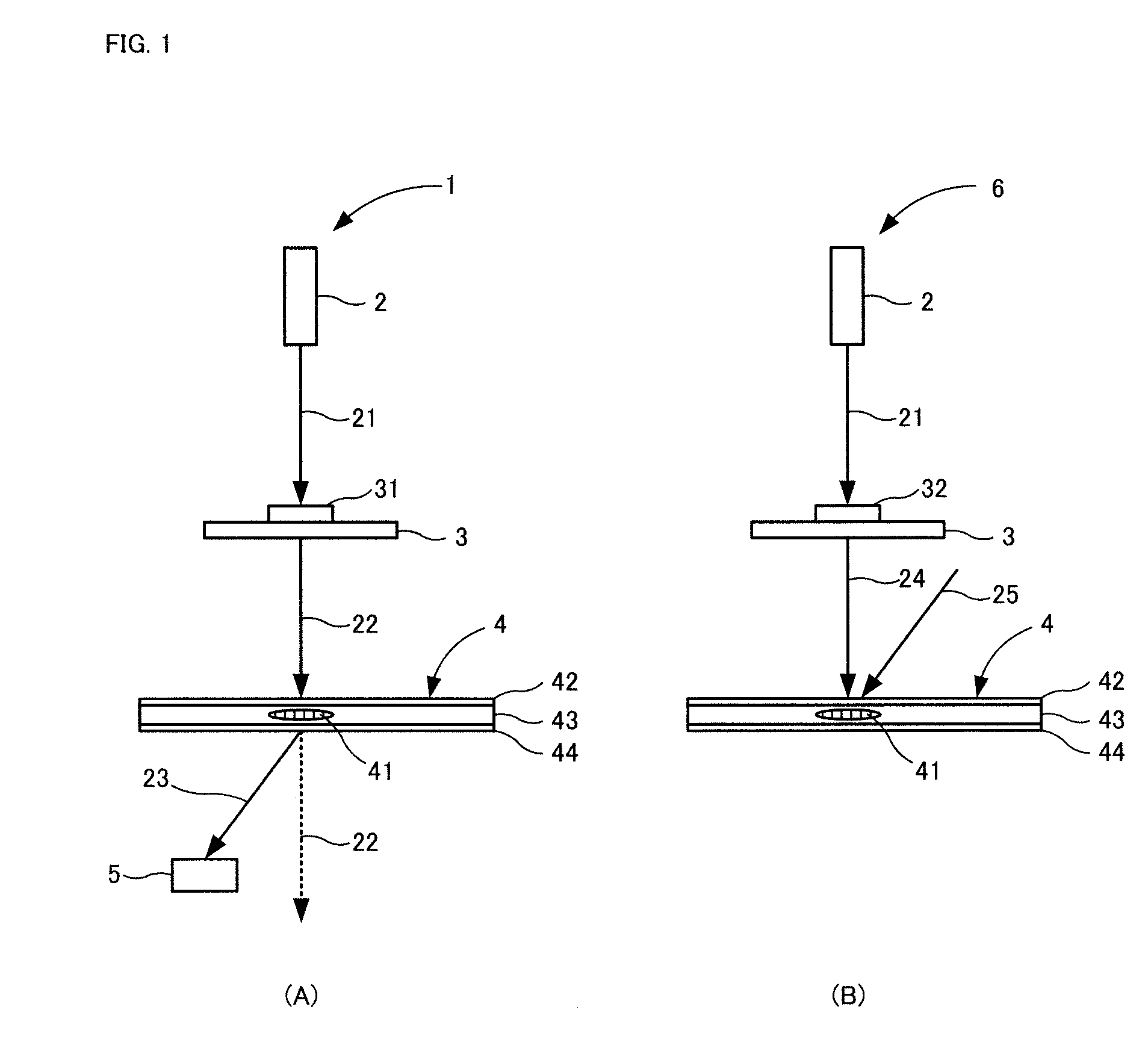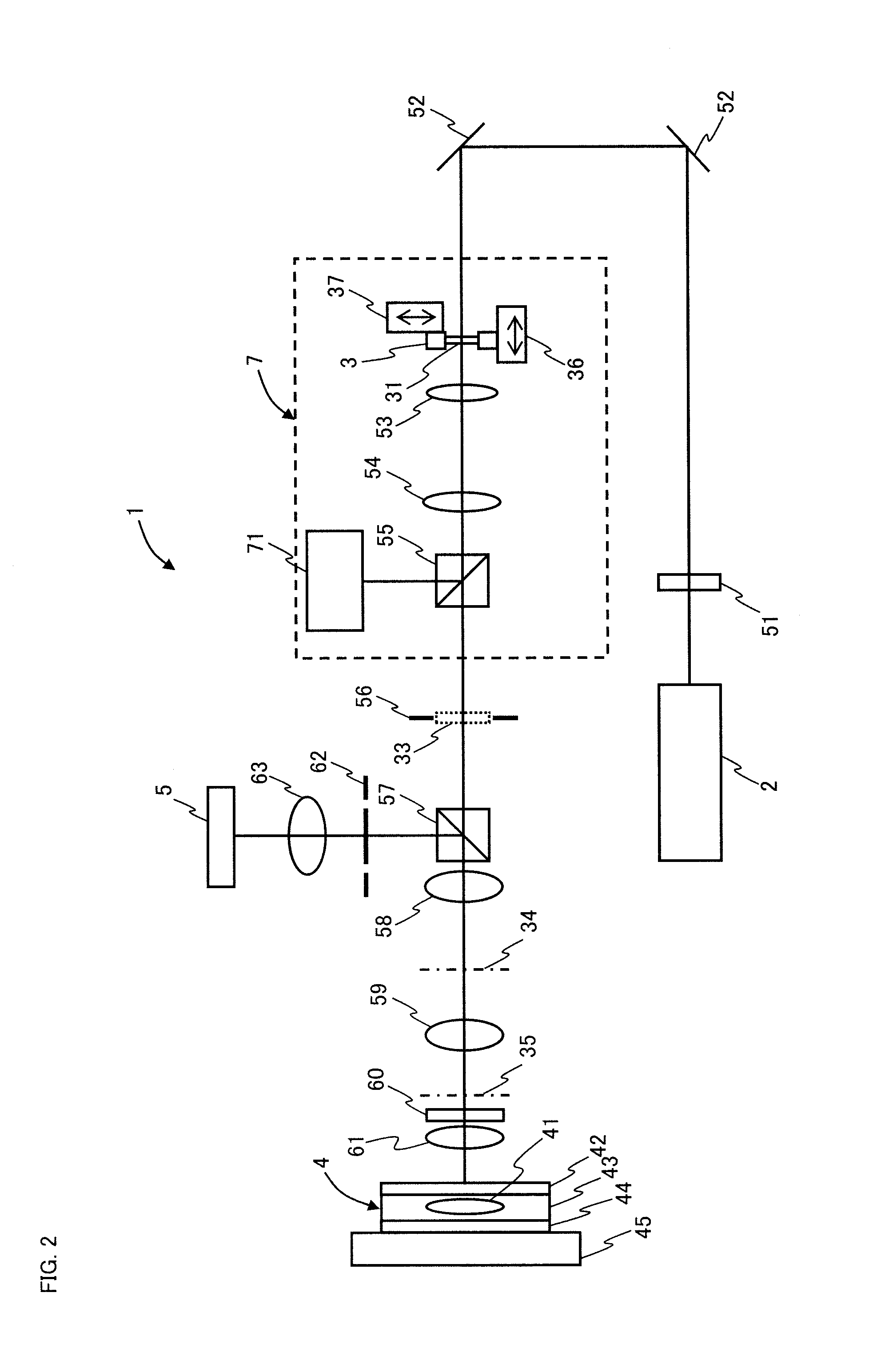Phase Object Identification Device and Method
a phase object and identification device technology, applied in the field of phase object identification devices and methods, can solve the problems of failure to create any cells, unfit observation of dyed cells, and scarcity of donors and rejections
- Summary
- Abstract
- Description
- Claims
- Application Information
AI Technical Summary
Benefits of technology
Problems solved by technology
Method used
Image
Examples
example 1
[0088]The device 80 in FIG. 6 was used to demonstrate the possibility of identifying phase objects. In this example, a Nd:YVO4 laser of 532 nm was used as the light source 81. As the mask 89, masks in the shapes shown in FIGS. 3(A) and 3(B) were used. More specifically, the mask for identification was a mask with a circular opening 56a in the center for generating sample light, whereas the mask for recording was a mask with a circular opening 56b in the center for generating object light and with twelve small circular openings 56c around the circular opening 56b in a radial fashion for generating reference light. The openings 56a and 56b for the profile of sample light or object light had a circular shape with a diameter of 1 mm, whereas the openings 56c for generating reference light had a circular shape with a diameter of 0.29 mm. In addition, the objective lens 92 had NA of 0.55 and a focal length of 4 mm.
[0089]First, four types of holograms 41 were recorded on the holographic re...
example 2
[0091]The device 80 in FIG. 6 was used to demonstrate the possibility of identifying phase objects in response to change in phase. The device in this example had the same conditions as in Example 1. First, the phase was changed by π / 4 from 0 to 2π for all of the pixels in the display region of 32×32 pixels of the phase spatial light modulator 84 to generate object light for each pixel, and record nine holograms by interference between the object light and the reference light. More specifically, the object light in accordance with the phase patterns in which the phase was set to 0, π / 4, π / 2, π / 4, π, 5π / 4, 3π / 2, 7π / 4, and 2π for all of the pixels in the display region was used to record holograms 0, π / 4, π / 2, 3π / 4, π, 5π / 4, 3π / 2, 7π / 4, and 2π.
[0092]These nine holograms were irradiated with sample light generated in accordance with a phase pattern in which the phase was set to 0 for all of the pixels in the display region. FIG. 9 shows the results of detecting reproduced light reproduc...
PUM
 Login to View More
Login to View More Abstract
Description
Claims
Application Information
 Login to View More
Login to View More - R&D
- Intellectual Property
- Life Sciences
- Materials
- Tech Scout
- Unparalleled Data Quality
- Higher Quality Content
- 60% Fewer Hallucinations
Browse by: Latest US Patents, China's latest patents, Technical Efficacy Thesaurus, Application Domain, Technology Topic, Popular Technical Reports.
© 2025 PatSnap. All rights reserved.Legal|Privacy policy|Modern Slavery Act Transparency Statement|Sitemap|About US| Contact US: help@patsnap.com



